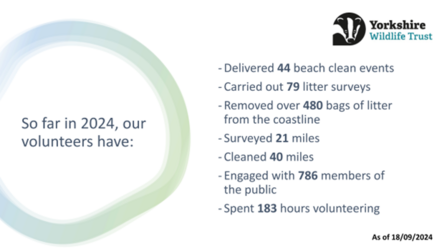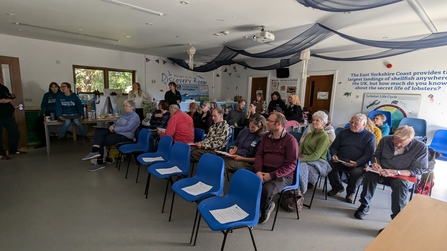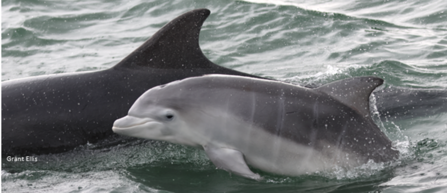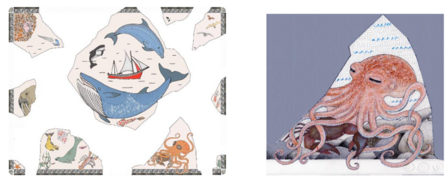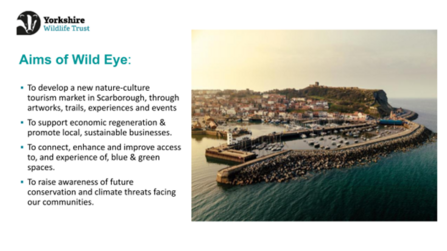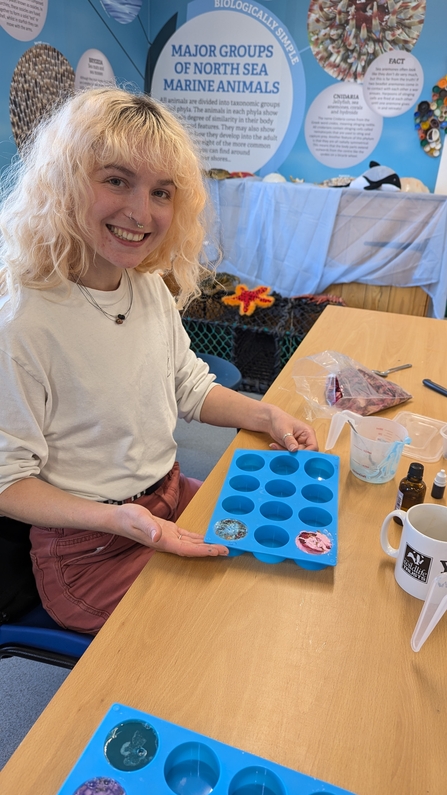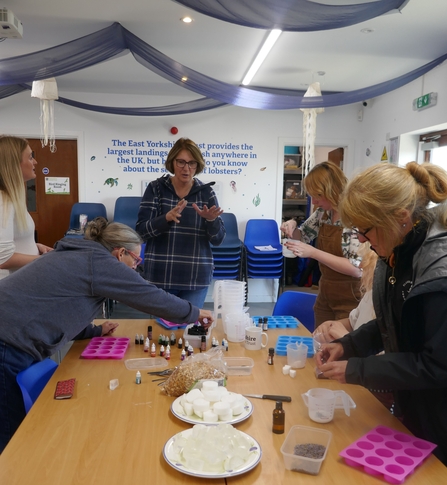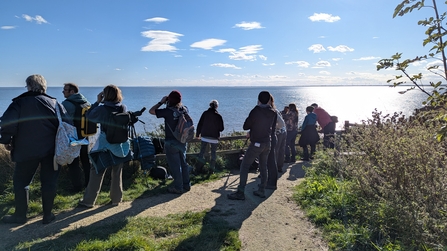Apologies for my late arrival…
When the rest of my life got in the way, I couldn’t get to Flamborough Living Seas Centre on time for the start of the conference to celebrate the wide variety of marine work that can only be done with the help of our volunteers. I rang the YWT “Batphone” (the out-of-hours emergency contact line) to inform the organisers, Ana Cowie (Marine Pollution Officer) and Bex Lynam (Marine Advocacy Manager) of my late arrival. The call went something like this
“Hi, it’s Howard Roddie”
“Hi, it’s Rachael how can I help?”
Rachael takes the details and sorts everything out for me…
I ask, “By the way, which Rachael?” (there are a few Rachael’s at the YWT)
“Rachael Bice, Chief Exec”.
Just another of the many responsibilities covered by our chief exec…
Themes and discussions
I arrived, with Andrea, my partner and fellow Shoresearcher, just before midday and the conference was in full swing. Sadly, we’d missed the first three sessions, but a lively Q&A session was taking place and some themes were emerging at that point…
- The vast majority of the work YWT does would not be possible without the energy and knowledge that all of the Trust’s volunteers bring to all of the ongoing projects, not just the 30 or so at this conference.
- Most externally funded projects have a lifespan of 3 years which can make ongoing continuity difficult. Here the role of volunteers in keeping things going when a project finishes is both part of the legacy of the project and one of the key reasons why the YWT can attract external funding in the first place. If the purpose of a project is long term, for instance to get seagrass to regenerate naturally, we have evidence from the USA that says it will take 8 years to do so.
- A lot of what we do is “Citizen Science”, certainly in the area of data gathering. A lot of effort goes into collecting precise and accurate data, whether it be recording beach litter, shoreline species or individual cetaceans (whales, dolphins and porpoises). A discussion we need to have is how we can best use our data, and connect it to data collected by other organisations.
- Ultimately, our aim is to preserve and improve our seas and coastlines, but in order to do this we need to influence decision makers in local and national government and other agencies. We can only do it if our aims have a high level of support in the community. So, engagement with local populations is another key part of our programmes. For instance, getting schools involved engages children who tell their parents and spread the word. Also, Shoresearch sessions and Waves of Waste litter picks often lead to questions from curious people on the beach. The Waves of Waste volunteers have, up to the end of September 2024, engaged with nearly 800 members of the public in this way, many of whom ask about the role of climate change.


